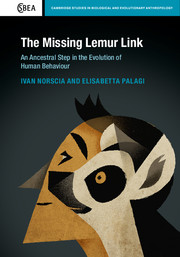Book contents
- Frontmatter
- Dedication
- Contents
- List of contributors
- A message from Jane Goodall
- Foreword
- Preface by the authors
- Acknowledgements
- Part I Communication: from sociality to society
- Part II How conflicts shape societies
- 4 Bossing around the forest: power asymmetry and hierarchy
- 5 Something to make peace for: conflict management and resolution
- 6 Anxiety…from scratch: emotional response to tense situations
- Part III Why lemurs keep in touch
- Part IV Closing remarks
- Looking back to the future – Michael Huffman
- Index
- References
5 - Something to make peace for: conflict management and resolution
from Part II - How conflicts shape societies
Published online by Cambridge University Press: 05 May 2016
- Frontmatter
- Dedication
- Contents
- List of contributors
- A message from Jane Goodall
- Foreword
- Preface by the authors
- Acknowledgements
- Part I Communication: from sociality to society
- Part II How conflicts shape societies
- 4 Bossing around the forest: power asymmetry and hierarchy
- 5 Something to make peace for: conflict management and resolution
- 6 Anxiety…from scratch: emotional response to tense situations
- Part III Why lemurs keep in touch
- Part IV Closing remarks
- Looking back to the future – Michael Huffman
- Index
- References
Summary
Man is neither, by nature, peaceful nor warlike. Some conditions lead to war, others do not.
Otterbein 1997, p. 272The end of social groups
After the death of King Alfonso XI of Castile in 1350, his eldest son Peter took control of the territory. Peter's mother, Maria of Portugal, had Alfonso's mistress, Eleanor de Guzman, killed. The death of Eleanor, who had given birth to ten children (Peter's half-siblings) split the royal descendants (legitimate and illegitimate) into two rival factions: Peter and his allies, and Alfonso's children by Eleanor, the Trastámaras, led by Henry. In the fights over the territory, Peter defeated the coalition led by his half-brother Henry in 1356 and 1360 and had two half-brothers (Henry's full brothers John and Peter) executed. Henry was forced to flee but later gained the support of Aragon, France, and many nobles of Castile. Meanwhile, Peter allied with Edward, heir to the English throne. This alliance allowed Peter to maintain the control upon the territory, until when Edward fell ill and, for political reasons, withdrew his support to Peter. Eventually, Henry took over the territory as Henry II and was responsible for the death of his half-brother Peter. John II, the great-grandson of Henry II, came to power after his mother Catherine of Lancaster, the regent, died in 1418. John II lacked authority and the territory became a battlefield for the nobles, more or less related to the ruling family, to gain power. As a result, the Trastámara family was, again, divided into two main factions: John II (with his supporting nobles) and his cousin Alfonso V of Aragon with his allies and brothers, Henry and John. In 1420, John II was kidnapped by his cousin Henry and then liberated by an ally, Álvaro de Luna. In 1429, Alfonso V ordered his brothers Henry and John to lead a joint attack (which was unsuccessful) against their cousin John II. In 1443 John II was once again captured by his cousin John of Aragon and the territory fell into near anarchy until 1445, when the group of nobles supporting John II, led by Álvaro de Luna, won a battle and Henry of Aragon was killed.
- Type
- Chapter
- Information
- The Missing Lemur LinkAn Ancestral Step in the Evolution of Human Behaviour, pp. 112 - 145Publisher: Cambridge University PressPrint publication year: 2016

